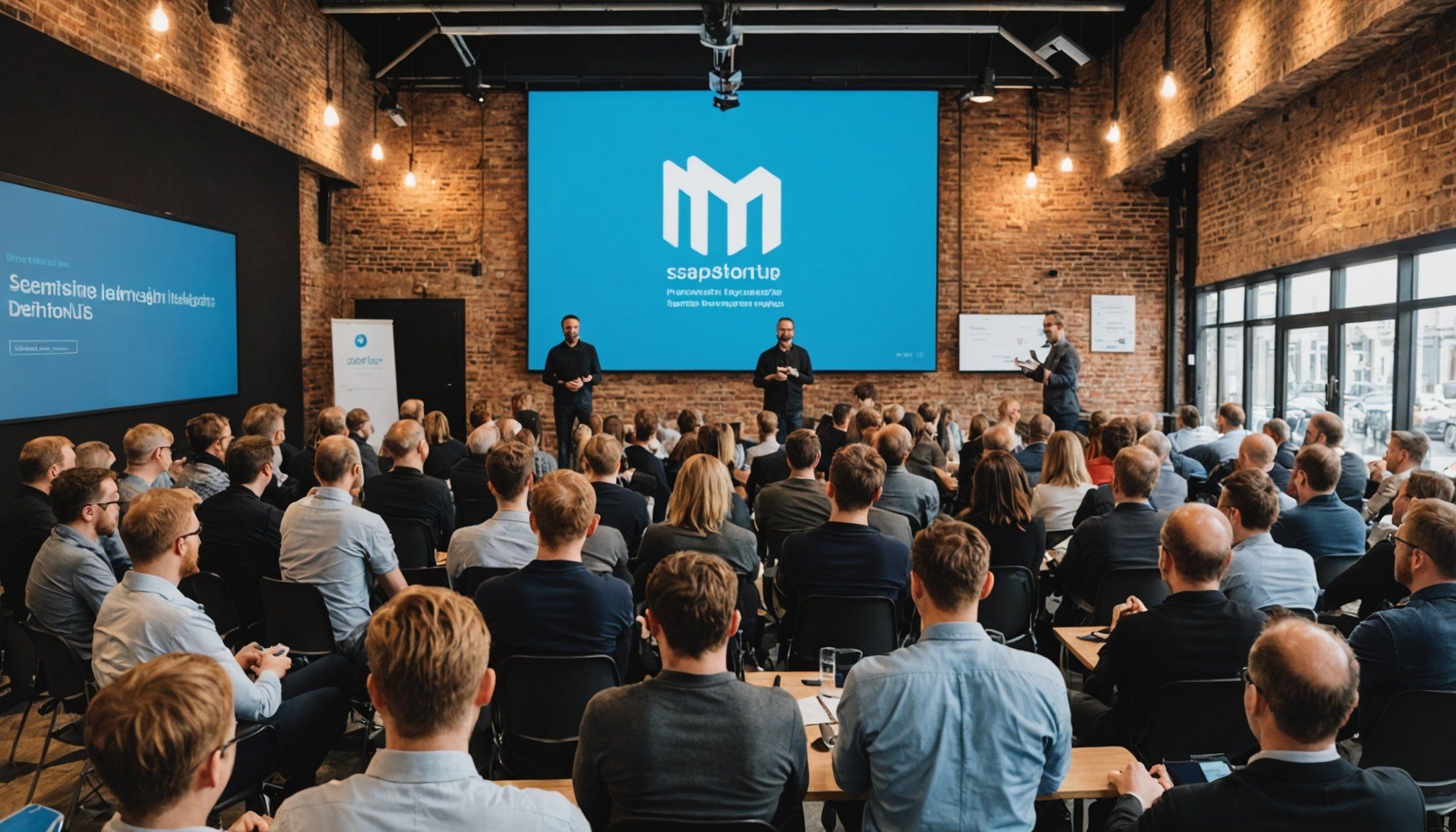Understanding Customer Insights
Understanding customer insights is pivotal for product development in tech startups. By leveraging customer feedback, tech startups in Manchester can tailor their products to better meet market demands. Let’s explore the methods these startups use to gain invaluable insights.
Importance of Customer Insights
Customer insights guide the creation of products that resonate with the target market. They provide a deeper understanding of customer needs, behaviours, and preferences. For tech startups, these insights are crucial for staying competitive, enabling them to design features that truly matter to users. Insights can also help identify potential areas for improvement or innovation, allowing startups to adapt swiftly to market changes.
Also read : Ultimate Strategies for Crafting an Effective Remote Work Policy in the UK Financial Industry
Types of Customer Research Methods
Tech startups employ various methods for gathering customer insights. Common techniques include conducting surveys and focus groups, which provide direct feedback. Market research is another essential tool, offering a broader view of industry trends and competitor positioning. Some startups leverage more innovative approaches like real-time analytics and social media monitoring to capture the evolving voice of the customer in dynamic digital environments.
Manchester’s Tech Community
In Manchester, the tech community actively harnesses customer feedback to refine their offerings. This proactive approach helps them stay at the forefront of the competitive tech landscape. By integrating customer feedback into their strategies, these startups foster a culture of continuous improvement and user-focused innovation.
Additional reading : Essential Components for Crafting a Powerful B2B Marketing Strategy in Birmingham’s Business Environment
Frameworks for Collecting Customer Insights
Understanding customer insights requires effective data collection methods and feedback tools. These elements are crucial for enhancing the overall user experience. Let’s delve into some key frameworks that make this possible.
Surveys and Questionnaires
Surveys are one of the most straightforward feedback tools. They allow startups to gather specific information directly from users. Creating effective surveys requires focused questions, clear language, and strategic timing. Questions should cover aspects of data collection methods and probe into user experience preferences. By targeting specific areas, startups can refine their offerings based on collected insights.
Focus Groups
Focus groups provide qualitative data that can complement the quantitative data from surveys. These sessions foster open discussions and yield nuanced insights into user preferences and behaviours. They utilize structured environments to explore user opinions, allowing more in-depth exploration of user motivations and barriers. Choosing diverse participants from the target market enriches the feedback gathered through these data collection methods.
Usability Testing
Usability testing is vital for understanding the user interaction with a product. It highlights potential areas for enhancement, revealing firsthand insights into the user experience. A well-structured usability test involves observing real users navigating a product to identify both strengths and weaknesses. Feedback tools such as video analysis and heuristic evaluations are integral for refining usability and ultimately improving the product.
Interpreting Customer Insights
Once customer insights have been collected, effective data analysis is essential for translating this information into actionable strategies. Tech startups can employ a blend of qualitative and quantitative analysis techniques. Qualitative analysis focuses on identifying recurring themes in feedback, such as common user frustrations or desires. In contrast, quantitative approaches involve statistical methods to gauge user behaviour patterns over time.
Identifying key trends and patterns from customer feedback is vital. By isolating these elements, tech startups can tailor their product strategies to align with emerging user needs and preferences. Trend identification often involves looking for spikes in user comments about specific features or shifts in how users engage with a product.
Data visualization plays a crucial role in making insights actionable. By transforming complex data sets into visual formats like graphs or charts, startups can discern patterns easier and communicate findings effectively within the team. Visual insights provide a clear and concise way to share the most important findings, aiding decision-making processes that drive product development in a direction that truly resonates with users’ wants and expectations.
Case Studies from Manchester’s Tech Startups
Incorporating customer feedback is essential for guiding successful product development within tech startups. Manchester’s vibrant tech scene presents real-world examples of how leveraging insights can lead to innovative changes and growth. This section delves into specific success stories that showcase effective use of customer insights.
Case Study: Startup A
Startup A, a thriving tech company in Manchester, utilised detailed market research and comprehensive customer feedback to pivot its initial product offering. By keenly analysing user needs and monitoring trends through data collection methods, the startup developed a more user-focused product. This shift not only increased customer satisfaction but also significantly boosted its market presence.
Case Study: Startup B
Another insightful example is Startup B, which faced initial challenges in product traction. Through conducting diverse focus groups, the startup uncovered vital user pain points and unmet needs. This qualitative approach allowed them to iterate their product design swiftly, leading to higher engagement rates and improved user experience.
Case Study: Startup C
Startup C stands out for its innovative use of real-time analytics. By employing these feedback tools, they could swiftly adapt to shifting user behaviours, demonstrating a proactive approach to trend identification. Their ability to implement actionable strategies based on precise customer feedback facilitated exponential growth and added a competitive edge.
Challenges in Leveraging Customer Insights
Navigating the landscape of customer insights presents several challenges for tech startups. Understanding these obstacles is crucial to capitalising on user feedback and improving product offerings.
Common Obstacles include overwhelming volumes of data and the difficulty of distinguishing valuable insights from noise. Startups often grapple with integrating diverse feedback tools and data sources in a coherent fashion. This fragmentation can impede effective data analysis and delay actionable outcomes.
Risk Management plays a pivotal role in mitigating issues associated with data privacy and security. Ensuring compliance with data protection regulations can be a complex task for startups, especially those handling sensitive user information. Failure to adhere to these standards may lead to reputational damage or legal repercussions.
Competing in a competitive market requires balancing customer feedback with the enterprise’s innovative vision. Overemphasising current customer demands might stifle creativity or ignore emerging trends. Startups must devise strategies to harmonise user needs with long-term goals, leveraging customer insights to both refine and redefine their products.
Though daunting, these challenges can be managed with organised approaches. Prioritising structured data systems, investing in comprehensive analytics tools, and fostering a dynamic culture open to both feedback and innovation will empower startups to harness insights effectively.
Best Practices for Implementation
Achieving a truly customer-centric culture is essential for tech startups striving for continuous improvement. At the core of this approach is valuing customer feedback as a strategic asset. This begins with nurturing open communication channels where all team members appreciate the insights customers bring.
Building a Customer-Centric Culture
Creating an environment that cherishes customer input involves clear leadership communication and training. Encouraging team discussions about customer insights fosters holistic engagement. This culture supports innovation by prioritising user needs and aligning organisational goals.
Integrating Feedback into Product Development Cycle
To effectively include feedback in the product development process, it is crucial to establish a structured framework. This includes regular review meetings to assess customer feedback and insights. Tech startups in Manchester benefit from set processes that ensure each customer suggestion is evaluated and, where relevant, integrated into design and operational strategies.
Measuring Success
To understand the effectiveness of these implementations, identifying key metrics is essential. Metrics might include customer satisfaction scores, engagement rates, and retention data. Regularly analysing these data points helps track the impact of customer insights on product development and refine processes for maximal improvement.
Expert Opinions on Customer Insights
Leveraging customer feedback is pivotal for tech startups looking to refine their product development processes. Insights from industry experts highlight how vital integrating market research is for sustained growth. By embracing innovative approaches, these experts advocate for blending traditional methodologies with digital advancements.
Insights from Interviews
Interviews with Manchester’s tech leaders reveal a consensus on the necessity of professional insights for shaping strategies. Experts emphasise the combination of qualitative and quantitative data to derive meaningful conclusions about user behaviour and preferences. This approach aids in preemptively identifying market shifts, thereby fostering agile responses.
Forward-Thinking Strategies
Industry leaders champion implementing best practices that revolve around repeated iteration and expansion of the feedback loop. This includes adopting real-time analytics and predictive models to anticipate customer needs proactively. By doing so, tech startups can maintain a competitive stance and spearhead innovation in their sectors.
Future of Customer Insights
The trajectory of customer insights in tech startups points to a more integrated use of machine learning tools and artificial intelligence. These technologies promise enhanced predictive capabilities, providing a strategic edge in product refinement. Experts foresee these innovations driving more profound understanding, ultimately leading to growth and market leadership.






